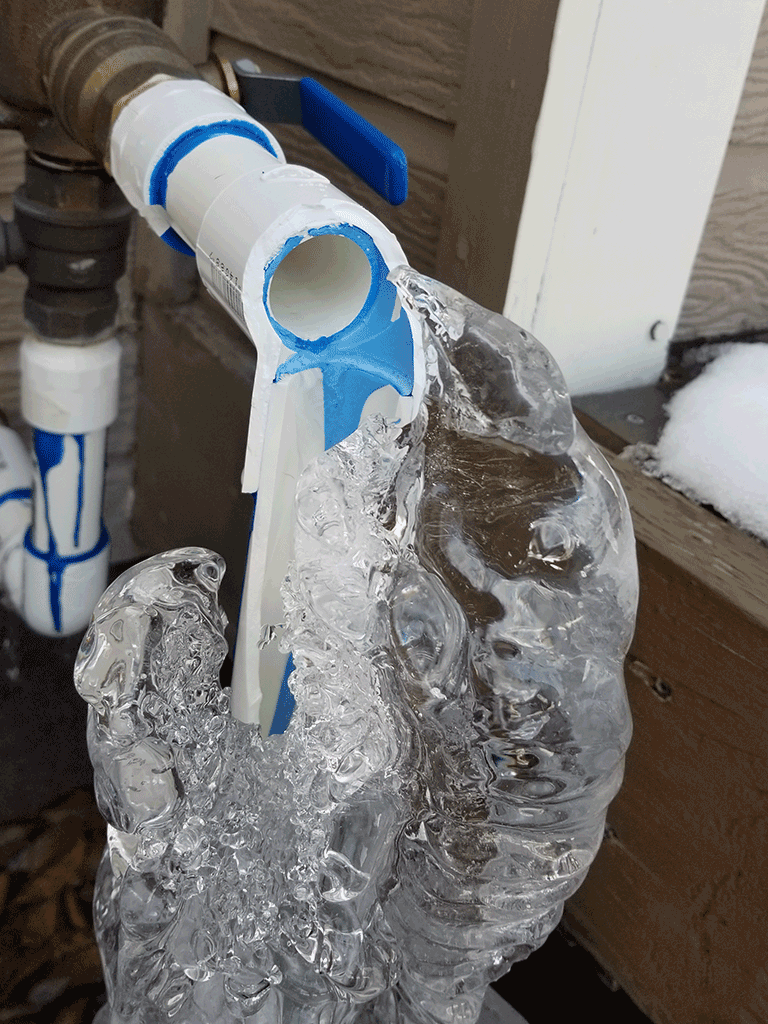Advice for Avoiding Frozen Plumbing in Cold Weather: Specialist Insights
Advice for Avoiding Frozen Plumbing in Cold Weather: Specialist Insights
Blog Article
Here on the next paragraphs you might get more extremely good resources in regards to How To Avoid Freezing Pipes.

Winter can damage your pipes, especially by freezing pipelines. Below's just how to stop it from occurring and what to do if it does.
Intro
As temperatures decline, the danger of icy pipes boosts, possibly leading to costly repair work and water damages. Comprehending exactly how to prevent icy pipelines is important for property owners in cold climates.
Comprehending Icy Pipelines
What causes pipelines to ice up?
Pipelines freeze when subjected to temperature levels below 32 ° F (0 ° C) for extended durations. As water inside the pipes ices up, it increases, taxing the pipe walls and possibly triggering them to break.
Threats and problems
Frozen pipelines can cause water system interruptions, home damage, and costly repairs. Burst pipelines can flood homes and create comprehensive structural damage.
Indicators of Frozen Piping
Recognizing frozen pipes early can avoid them from rupturing.
Exactly how to determine frozen pipes
Try to find lowered water flow from faucets, unusual odors or noises from pipelines, and noticeable frost on revealed pipes.
Prevention Tips
Shielding at risk pipes
Wrap pipes in insulation sleeves or make use of warm tape to shield them from freezing temperature levels. Concentrate on pipes in unheated or outside locations of the home.
Home heating methods
Maintain interior rooms adequately warmed, specifically locations with plumbing. Open closet doors to permit warm air to circulate around pipelines under sinks.
Securing Outdoor Plumbing
Yard hose pipes and outdoor faucets
Detach and drain pipes garden hose pipes prior to winter months. Set up frost-proof faucets or cover outside taps with protected caps.
What to Do If Your Pipes Freeze
Immediate activities to take
If you believe frozen pipelines, maintain faucets open up to relieve stress as the ice melts. Use a hairdryer or towels taken in hot water to thaw pipes slowly.
Long-Term Solutions
Architectural adjustments
Take into consideration rerouting pipes far from outside wall surfaces or unheated locations. Include added insulation to attics, basements, and crawl spaces.
Updating insulation
Purchase top notch insulation for pipes, attic rooms, and wall surfaces. Appropriate insulation assists keep regular temperature levels and reduces the threat of icy pipelines.
Final thought
Preventing frozen pipes needs proactive steps and quick actions. By comprehending the reasons, indications, and preventive measures, property owners can secure their pipes during cold weather.
Helpful Tips to Prevent Frozen Pipes this Winter
UNDERSTANDING THE BASICS: WHY PIPES FREEZE AND WHY IT’S A PROBLEM
Water freezing inside pipes is common during the winter months, but understanding why pipes freeze, and the potential problems it can cause is crucial in preventing such incidents. This section will delve into the basics of why pipes freeze and the associated problems that may arise.
THE SCIENCE BEHIND FROZEN PIPES
When water reaches freezing temperatures, it undergoes a physical transformation and solidifies into ice. This expansion of water as it freezes is the primary reason pipes can burst. As the water inside the pipe freezes, it expands, creating immense pressure on the walls. If the pressure becomes too great, the pipe can crack or rupture, leading to leaks and water damage.
FACTORS THAT CONTRIBUTE TO PIPE FREEZING
Low Temperatures: Extremely cold weather, especially below freezing, increases the risk of pipes freezing. Uninsulated or Poorly Insulated Pipes: Pipes located in unheated areas, such as basements, crawl spaces, or attics, are more prone to freezing. Insufficient insulation or lack of insulation altogether exacerbates the problem. Exterior Wall Exposure: Pipes running along exterior walls are susceptible to freezing as they encounter colder temperatures outside. Lack of Heating or Temperature Regulation: Inadequate heating or inconsistent temperature control in your home can contribute to frozen pipes. PROBLEMS CAUSED BY FROZEN PIPES
- Pipe Bursting: As mentioned earlier, the expansion of water as it freezes can cause pipes to burst, resulting in significant water damage.
- Water Damage: When pipes burst, it can lead to flooding and water damage to your property, including walls, ceilings, flooring, and personal belongings.
- Structural Damage: Prolonged exposure to water from burst pipes can compromise the structural integrity of your home, leading to costly repairs.
- Mold and Mildew Growth: Excess moisture from water damage can create a favorable environment for mold and mildew growth, posing health risks to occupants.
- Disrupted Water Supply: Frozen pipes can also result in a complete or partial loss of water supply until the issue is resolved.
WHY CERTAIN PIPES ARE MORE PRONE TO FREEZING
- Location: Pipes located in unheated or poorly insulated areas, such as basements, crawl spaces, attics, or exterior walls, are at higher risk of freezing.
- Exterior Pipes: Outdoor pipes, such as those used for irrigation or exposed plumbing, are particularly vulnerable to freezing as they are directly exposed to the elements.
- Supply Lines: Pipes that carry water from the main water supply into your home, including the main water line, are critical to protect as freezing in these lines can affect your entire plumbing system.
- Underground Pipes: Pipes buried underground, such as those connected to sprinkler systems or outdoor faucets, can be susceptible to freezing if not properly insulated.
https://busybusy.com/blog/helpful-tips-to-prevent-frozen-pipes-this-winter/

I'm just very interested by Winter Plumbing Precautions: Preventing Frozen Pipes and I'm hoping you enjoyed reading our page. Are you aware of someone else who is fascinated about the niche? Take a moment to share it. I am grateful for your time. Kindly come visit our website back soon.
Quote & Schedule Report this page